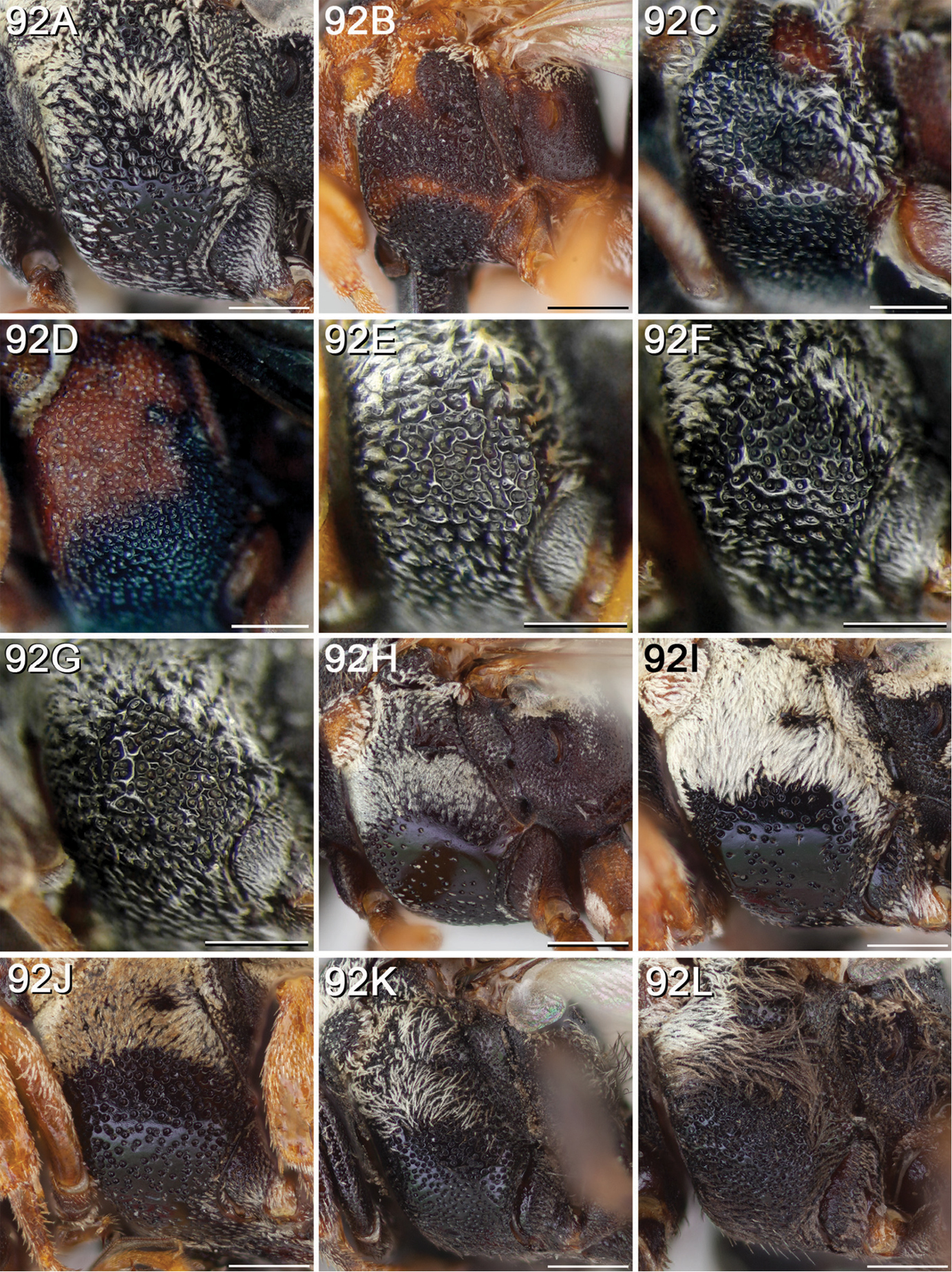
|
||
|
Mesopleuron (lateral view) of female A E. lectus showing sparse punctation (most i>1d) B E. carolinus showing dense punctation (most i≤1d) C E. deyrupi paratype showing moderately sparse punctation (i≤2d) D E. packeri paratype showing moderately dense punctation (most i<1d) E E. erigeronis showing very dense punctation (few if any interspaces as large as puncture diameters) F E. ilicis showing moderately dense punctation (i≤1d) G E. inornatus paratype showing moderately dense punctation (i≤1d) H E. tessieris paratype showing very sparse punctation (most i>1d) I E. chamaesarachae paratype showing very sparse punctation (most i>1d) J E. diadematus paratype showing sparse punctation, but punctures denser (many i≤1d) relative to E. chamaesarachae K E. americanus showing moderately dense punctation, with most punctures clearly separated (i=1d) and the interspaces shining; and L E. asperatus showing very dense punctation (most i<1d). Scale bars 0.5 mm. |